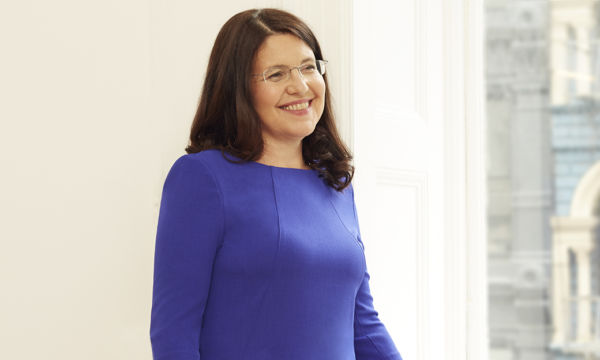Ballet Dancer Turned CEO: Rachel Moore’s Second Act
May 14, 2016
Rachel Moore was a dancer with the American Ballet Theatre for nearly six years until she hung up her shoes at age 24. She later returned to the ABT, but as its executive director and, eventually, its CEO (she is now the President and CEO of The Music Center in Los Angeles). Here, she talks about her transition from ballerina to businesswoman.
I started dancing when I was 11—which is late, in the ballet world—and I was besotted with it immediately. Dancing enthralled me, and going to ballet class was never a burden—it was the best part of my day. When I was 13, the Joffrey Ballet came to perform in my hometown of Davis, California, and Mr. Joffrey offered me a scholarship to their summer program. That’s when I realized that professional ballet could be possible.
Every dancer knows that someday they’ll need a second act—it’s just a question of when they acknowledge it. For me, that point came after about four or five years of dancing professionally, when I realized that I was never going to be a big star. I was in the corps de ballet at the American Ballet Theater, which was a great honor. It’s the backbone of many productions, and I knew that I was contributing to something beautiful onstage. But no matter how hard I worked, some people were simply more talented than I was. Not being a complete fool, I saw what other people could do and what I couldn’t. I remember standing in the wings, watching Mikhail Baryshnikov dance, and thinking, “How the hell does he do that?”
I’m not someone who blames the world for not seeing how great I was. There are innate abilities that certain people have and certain people don’t, and to get to the very highest level, it takes more than discipline. I had gotten very far and worked very hard, but I didn’t have the star-level talent that was needed to rise further. Of course, I definitely felt that I was a failure at the time. I kept thinking, “If I’d worked harder when I was 16, maybe things would be different.” Which was complete malarkey, but it was part of the process. Then I got injured, and dancing became incredibly painful. I remember my last day, when I finished my final performance and hung up my shoes, I just sobbed and sobbed. I knew I had to go out into a world that I didn’t know anything about, and I didn’t have any confidence that I would be successful in it.
When I went to college at Brown at age 24, the first six months were really rough. I had defined myself as a dancer all my life, and I remember thinking, “Well, now I’m a nothing.” But it was a revelation to me that I was totally capable of doing the schoolwork, despite my weird background, and that gave me the confidence to redefine who I was.
I found my second calling about three years after I stopped dancing. I started to get really interested in issues around artists’ rights—the political side of the arts—and I spent summers interning with the National Endowment for the Arts in Washington, DC. I became empowered to say, “I’m a former artist who is now taking steps to change the world for the next generation of artists,” and I began to identify with artists in a different way, one that I was proud of. It was then that I realized something: It wasn’t that I’d failed at dance and had to pursue the second-best thing—it was that I’d found the real best thing.
In one of my former jobs, I used to travel around to chambers of commerce and tell them why they should hire dancers because performers understand how to take criticism well. In ballet, you learn that if you get a correction, it’s a gift from the teacher. Getting attention paid to you so that you can improve is seen as a good thing—a compliment, even. But that’s not part of our general culture. Most people receive constructive criticism and take it so personally that they can’t actually fix the problem. Dancers learn to listen to criticism and not take it personally, and it’s a huge asset.
Performers also have a very healthy regard for deadlines. They know that at a certain point, they will be onstage in front of an audience, and they need to go through all the steps to prepare for it. Nobody else can pick up the slack for them, and they can’t cram at the last minute. Deadlines in the performing arts are very real.
My years as a dancer helped my executive career tremendously, but I’ve also had to learn to separate myself from them. There’s a culture in professional ballet where if you’re in the corps, you are somehow a lesser human being than if you are a principal dancer, and it took me a while to shake that. When I went back to run the American Ballet Theater with the great Kevin McKenzie, whom I’ve known forever, he asked me in the interview process, “Is it going to be a problem that I was a principal dancer and you were just in the corps?” And I said, “No, because what I’m doing now isn’t related to my skill as a dancer, and I’m highly accomplished at what I do.” But I could not have said that 15 years earlier.
-As told to Charlotte Cowles
Rachel Moore’s new book, The Artist’s Compass: The Complete Guide to Building a Life and a Living in the Performing Arts, is out now.








